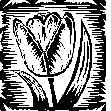 |
Plant Physiology (Biology 327) - Dr. Stephen G. Saupe; College of St. Benedict/ St. John's University; Biology Department; Collegeville, MN 56321; (320) 363 - 2782; (320) 363 - 3202, fax; ssaupe@csbsju.edu |
 |
Plant Physiology (Biology 327) - Dr. Stephen G. Saupe; College of St. Benedict/ St. John's University; Biology Department; Collegeville, MN 56321; (320) 363 - 2782; (320) 363 - 3202, fax; ssaupe@csbsju.edu |
Photomorphogenesis: Effect of Light on Seedling Growth & Development
Objectives: Upon completion of this lab you should be able to:
Introduction
Light has a powerful impact on plant growth and development.
This phenomenon, termed photomorphogenesis, explains why plants grown in
the light, reduced light conditions, or even total darkness, look different than
those grown in the light.
In this exercise we will observe the effect of light on maize, sunflower and
pea.
Pre-Lab
Print a copy of this handout.
Complete the following hypotheses about plant growth under light and dark conditions. Circle your prediction for each of the following and then write the rationale for your response.
|
Hypotheses: |
Rationale for Prediction | |
| 1. | Plants grown in the dark will be (shorter / taller) than those grown in the light. | |
| 2. | Plants grown in the dark will have a (thinner / thicker) stem than those grown in the light. | |
| 3. | Plants grown in the dark have (less / more ) chlorophyll (green coloration) than those in the light | |
| 4. | The leaves of plants grown in the dark will be (smaller / larger) than those grown in the light. | |
| 5. | The apex of plants grown in the dark will be (straight / hooked) compared to those grown in the light. |
Methods
In
each of three pots containing pre-moistened Jiffy Mix plant several seeds each of
a cereal such as maize or oats, and a eudicot such as garden bean, sunflower, pea, and/or amaranth. Moisten the medium, label with your name and
date, cover with plastic wrap and then put one pot in the dark and the other in
the light. Measure the irradiance. Once the seedlings
appear, remove the plastic wrap. After several days
of growth, when the seedlings are approximately 10 cm in height, examine your
plants to see whether your data support your hypotheses. Using a
ruler to measure the height (in mm) of 10 plants (what exactly will you
measure?) and use a caliper to measure the diameter of the stem (or hypocotyl)
in mm and complete Table 1. On sheet of paper, lay one
representative specimen of each plant grown under each condition and record a
digital image with the camera provided (or bring your own). Label on this
diagram the following: hypocotyl, epicotyl, epicotyl hook, cotyledon, and coleoptile.
Results:
| Table 1. Comparison of dark and light grown seedlings of _____________, and _____________. Seedlings were grown in four-inch pots in Jiffy-Mix for ______ days at room temperature. The light fluence was ___________________________. | |||||
| Dark | Light | ||||
| 1. | 2. | 1. | 2. | ||
| Height (mm) | 1 | ||||
| 2 | |||||
| 3 | |||||
| 4 | |||||
| 5 | |||||
| 6 | |||||
| 7 | |||||
| 8 | |||||
| 9 | |||||
| 10 | |||||
| Stem thickness (mm) | 1 | ||||
| 2 | |||||
| 3 | |||||
| 4 | |||||
| 5 | |||||
| 6 | |||||
| 7 | |||||
| 8 | |||||
| 9 | |||||
| 10 | |||||
Analysis of Hypotheses:
| Null hypothesis: | |
| probability value: | p = |
| Null hypothesis is: | supported rejected |
| Null hypothesis: | |
| probability value: | p = |
| Null hypothesis is: | supported rejected |
Assignment:
| | Top | SGS Home | CSB/SJU Home | Biology Dept | Biol 327 Home | Disclaimer | |
Last updated:
01/07/2009 � Copyright by SG
Saupe